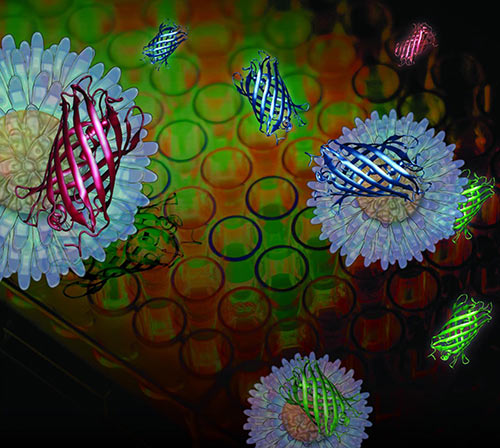Scientists at the University of Massachusetts-Amherst say they have developed a multichannel sensor technique using gold nanoparticles that can accurately profile various anticancer drugs and their mechanisms in minutes.
As Vincent Rotello, Ph.D., explains, to discover a new drug for any disease, researchers must screen billions of compounds, which can take months. One of the added keys to bringing a new drug to market, he adds, is to identify how it works, i.e., its chemical mechanism.
“Rapid determination of drug mechanism would greatly streamline the drug discovery process, opening the pipeline of new therapeutics,” says Le Ngoc, a grad student working with Dr. Rotello. “Drugs with different mechanisms cause changes in the surface of cells that can be read out using the new sensor system. We found that each drug mechanism generated a unique pattern, and we used these cell surface differences to quickly profile different drug mechanisms.” Details of this work (“A multichannel nanosensor for instantaneous readout of cancer drug mechanisms”) appear in Nature Nanotechnology.
To expedite drug screening, the research team, which includes a materials scientist from Imperial College, London, developed a new, signature-based approach using a gold nanoparticle sensor system and three differently labeled proteins by color: blue, green and red. Using an engineered nanoparticle and three fluorescent proteins provides a three-channel sensor that can be trained to detect subtle changes in cell surface properties,” the authors note.
Drug-induced cell surface changes trigger different sets of fluorescent proteins to turn on together, offering patterns that identify specific cell death mechanisms. The new nanosensor is generalizable to different cell types and does not require processing steps before analysis. So, it offers a simple, effective way to expedite research in drug discovery, toxicology, and cell-based sensing, the researchers add.
Some signature-based drug screening using traditional biomarkers exists today, but it requires multistep cell processing and special equipment, limiting its usefulness.
With their three-channel, gold nanoparticle sensor platform, Dr. Rotello and colleagues say they can solve those challenges and enhance accuracy. Further, they add, “the information-rich output allows the determination of a chemotherapeutic mechanism from a single measurement, providing answers far more quickly (in minutes) than current methods, using standard laboratory instrumentation.”
“The nanosensor is generalizable to different cell types and does not require processing steps before analysis, offering an effective way to expedite research in drug discovery, toxicology, and cell-based sensing,” wrote the investigators.


